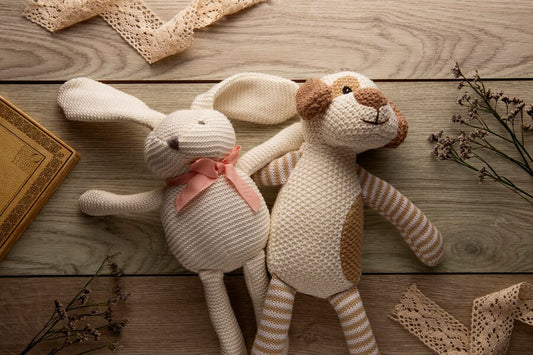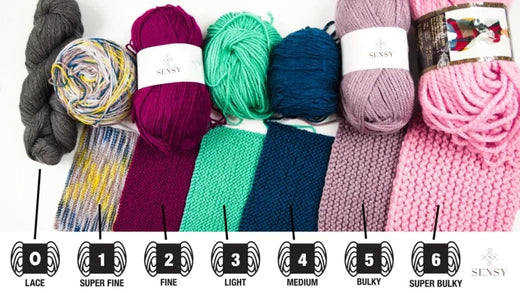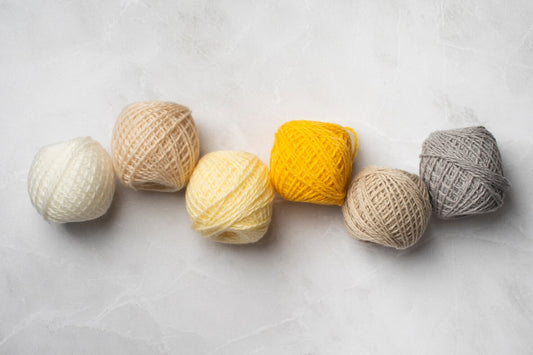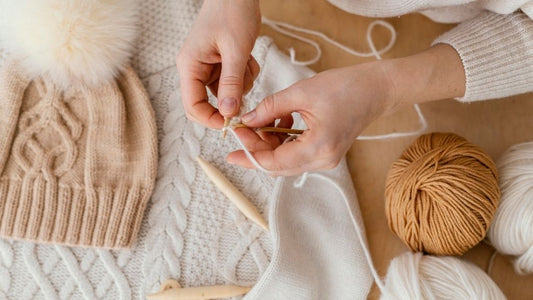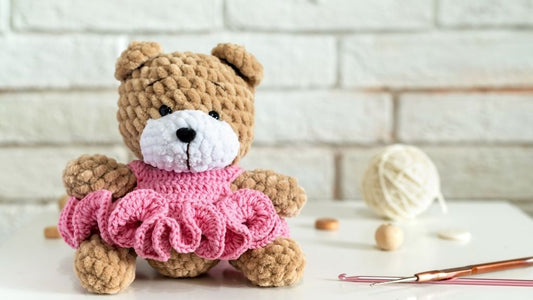
What Are The Different Knitting Needle Types?
When you first begin knitting, the process of knitting and using knitting needles feels fairly foreign, and you likely haven't yet formed a strong opinion about the kind of knitting needles you prefer to use. We know it can be difficult to find the right knitting needles with so many options available, so we've put up this useful guide. You can choose the knitting needles you think will work best for you using the information provided below.
Knitting Needle Materials
Wooden Knitting Needles
Wooden knitting needles are smooth and offer the ideal amount of texture, which prevents yarn from slipping off the needles as readily. enabling you to knit at a consistent pace and precisely construct your stitches. Bamboo knitting needles are a popular kind that are used; they are comparable to wooden knitting needles in quality but cost less. Making it a superior option for novices compared to birch-colored wooden knitting needles. They are favored by many knitters because they are strong and lightweight.
Metal Knitting Needles
Metal knitting needles are frequently constructed of aluminum, though some are also steel or nickel-plated. Metal knitting needles are better suited for more experienced knitters who are familiar with their tension since they give knitters the smoothest surface and accelerate stitching. Knitting with metal needles also produces the well-known "click" sound!
Plastic Knitting Needles
The cheapest type of knitting needles are those made of plastic. For someone who wants to try knitting for the first time, they make a terrific first set of needles. Since they are the lightest and have a smoothness similar to wooden knitting needles, they are also excellent for beginners.

Knitting Needle Styles
Straight Knitting Needles
The more conventional type of knitting needles are straight needles. These straight, pairable knitting needles are available in lengths up to 7'. Although they are still in use today, many knitters save these needles for tiny jobs where there won't be a lot of bulk as you work. They work well for crafts like mitered squares, baby blankets, and scarves that are constructed in discrete pieces.
Circular Knitting Needles
Two short, pointed ends are joined by variable lengths of string, typically made of plastic, to form circular knitting needles. These knitting needles may be the most pleasant to use for certain people since they distribute your stitches more evenly. They are a great option for individuals working on bigger projects because of this. They are also perfect for completing larger circumferences in the round. Circular knitting needles are a flexible type of knitting needle to own because they are also excellent for knitting smaller projects. Additionally, circular needles can be utilized for tasks like afghans that call for more stitches than a straight needle can accommodate.
Double-Pointed Knitting Needles
Knitting needles with two points at the end are shorter and called double-pointed. These DPN knitting needles are made specifically for knitting in the round. This refers to knitting items like some hats, baby hats, socks, and some garment sleeves without using seams. In a pinch, double-pointed knitting needles can be used instead of a cable needle to create i-cords.
Interchangeable Knitting Needles
Circular knitting needles with a detachable cord are the type used in this design. A set of interchangeable knitting needles is ideal for a committed knitter because they often include knitting needles and cords in a variety of sizes, allowing you to adjust the length of the cable on your circular needles to suit the needs of your project.
Knitting Needles Sizes
The type of yarn you are using will determine the size of your knitting needles. You will need larger knitting needles if you are using thicker yarn. This is so you can get an accurate gauge. The gauge is the number of stitches you knit with a particular yarn at each inch. Looking at the product information on a yarn page or simply inspecting the label of a skein of yarn will allow you to quickly determine what size knitting needles and gauge you will need to accomplish with a particular yarn. You can find what you need among the knitting symbols listed below:

Different Ways Of Knitting
There are two distinct knitting styles: English knitting and continental knitting, notwithstanding the wide variety of knitting needles available. The next method of holding knitting needles is the same for all knitters, regardless of whether they use English or continental stitches.
 |
 |
With your arms slightly bent and your fingers delicately curled over the top of the knitting needles, you grasp one needle in each hand.
English Knitting
When you use English knitting, you wrap the yarn around the working needle using your working hand.
Continental knitting refers to the practice of holding onto your work while knitting while using your opposite hand to wrap the yarn around your working needle.

